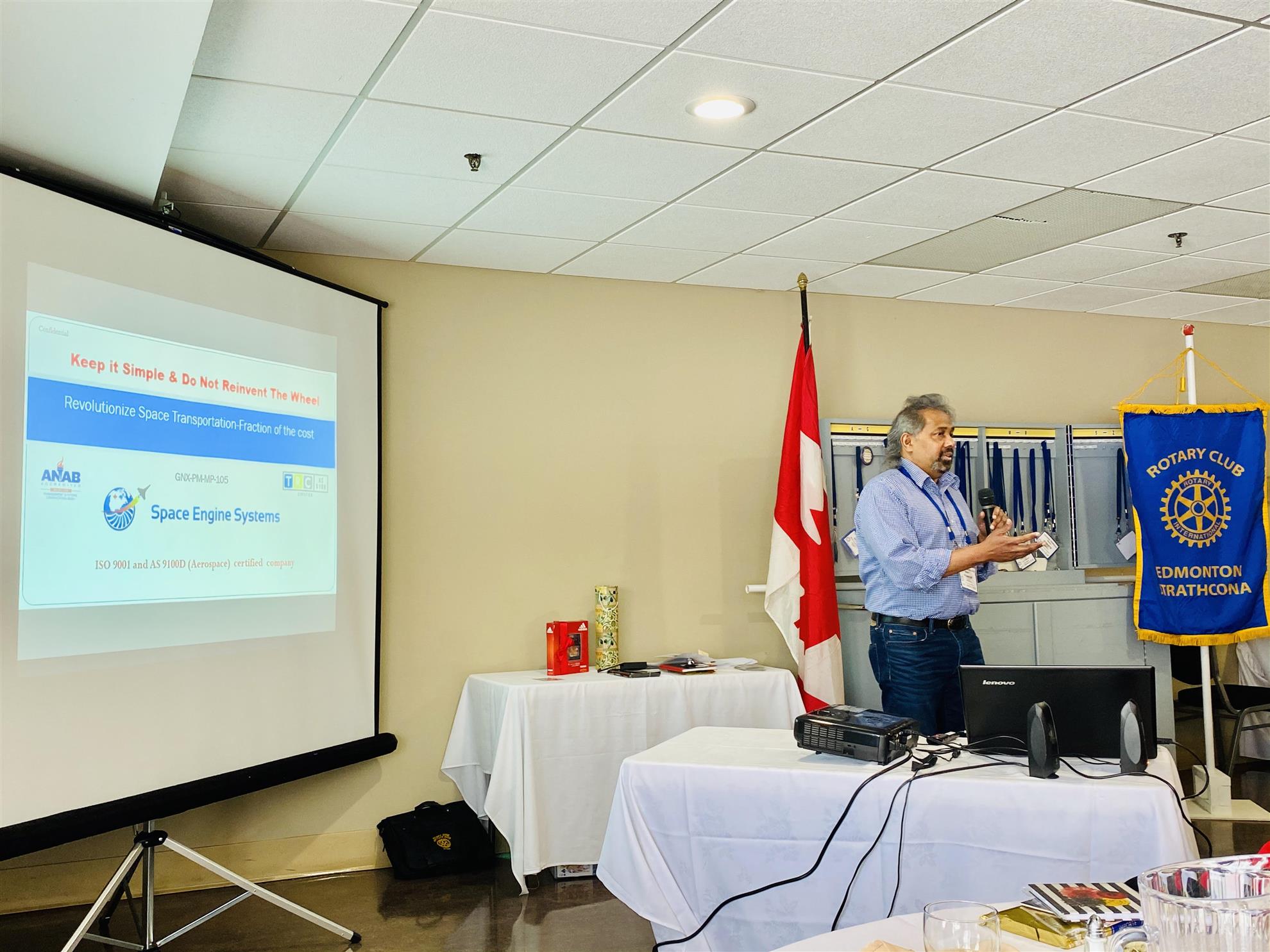This last Tuesday we were delighted to hear from one of our members, Pradeep Dass, who spoke to us about his company Space Engine Systems. This company was voted as one of the top six space companies in Canada in 2019. Pradeep said that they are developing an engine that will be able to take off horizontally and land horizontally, while also being able to attain speeds sufficient to take a vehicle into earth orbit and beyond. Obtaining funding from the Canadian government for this venture has not been possible so far as they are not presently interested in launch vehicles.

Currently he is funding the development mostly from his own funds. Only a few other companies are working in this field but the vehicles they are using are all rockets of one kind or another. Rockets are inherently expensive as they are one-way vehicles, that may recover and reuse some parts, but a large portion of the vehicle is not reusable. Pradeep’s DASS GNX engine and vehicle will be fully reusable. The engine has both a jet fuel portion that uses nanoparticle injection combined with a smaller rocket engine that burns hydrogen. It also has a unique heat exchanger that allows it to operate more efficiently.
Pradeep started working on this engine in 2012 and he now has it to the point where they have started low Mach testing. The construction and testing have all taken place in Alberta so far. Pradeep said that regular jet airplanes break apart at low Mach speeds, and vehicle bodies strong enough for Mach flight are rare and their owners are not willing to sell one to him, so they may end up having to build their own. They have recently acquired a testing facility in England where they will be able to attach their engine to a vehicle strong enough to withstand Mach flight and will then be able to perform flight testing. They are hoping to be able to do flight testing by 2023. They are also looking for a testing site in the US.
Pradeep said that his engine would be capable of allowing one to take off and land the same as a normal airplane, but the flight itself would attain much higher speeds and elevation making the trip much shorter than today. A passenger onboard would not notice any difference from a usual airplane flight. The cost would also be substantially less than with other existing space flight companies as the vehicle and engine would be fully reusable, can carry a higher payload and use less fuel.
We would like to thank Pradeep for his very interesting presentation and wish him every success in this endeavour.